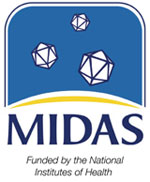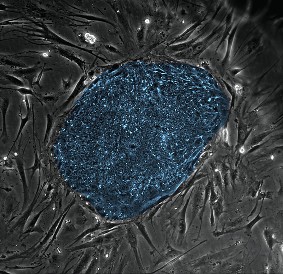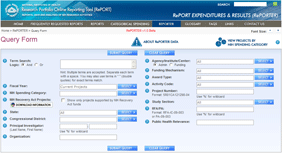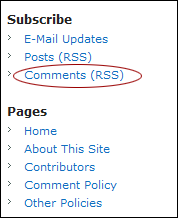Yesterday, President Obama announced the 2009 recipients of the National Medal of Science and the National Medal of Technology and Innovation. The nine winners of the National Medal of Science include NIH Director Francis Collins and long-time NIGMS grantee JoAnne Stubbe, a biochemist at MIT. I am delighted that the President recognized these outstanding scientists and innovators for their contributions.
Category: News
Happy Fifth Birthday, MIDAS
 Five years ago this summer, MIDAS, the Models of Infectious Disease Agent Study, was born. When we began, we knew the effort to develop computational models of disease spread would play a role in preparing for new outbreaks—we just didn’t think it’d be so immediate. First with H5N1 fears and now with the H1N1 pandemic, our researchers have provided computational models to help decisionmakers from all levels of the government plan ways to control flu.
Five years ago this summer, MIDAS, the Models of Infectious Disease Agent Study, was born. When we began, we knew the effort to develop computational models of disease spread would play a role in preparing for new outbreaks—we just didn’t think it’d be so immediate. First with H5N1 fears and now with the H1N1 pandemic, our researchers have provided computational models to help decisionmakers from all levels of the government plan ways to control flu.
While modeling is just one of many tools used in making policy recommendations, it can help explore different scenarios and outcomes. In the case of flu, MIDAS scientists have used their models to help answer questions like:
- Can you contain a pandemic locally?
- What’s the best way to slow the spread of flu while we develop a vaccine?
- What’s the impact of non-pharmaceutical interventions?
- Should we distribute antivirals before an outbreak?
As we head into the next five years, we are adding two new centers and three research groups that are pretty exciting. They bring expertise in such areas as MRSA modeling, high-performance computing, statistics, social behavior and visualization tools for non-experts. We’re also going to put a lot more effort into understanding the ecology and evolution of disease, the impact of co-infections, and antibiotic and antiviral resistance.
The two new centers have an additional charge in education and outreach, particularly with public health officials from around the world. I am especially looking forward to this, since there’s such a great need for people with backgrounds in infectious disease epidemiology to also be able to do analytical and computational work.
The thoughtful, careful studies we do through MIDAS require a diverse group of people to communicate with each other every day. One thing I love about the way MIDAS has matured over the years is that we’ve built a level of trust and collaboration. Our researchers freely share data, ideas, and analytical and computational tools.
As we’ve learned, health policy questions emerge and develop almost instantly as new issues arise. Our challenge will continue to be modeling in this real-time context.
What’s Your Recovery Act Story?
 If you’ve gotten funding through the American Recovery and Reinvestment Act, you know how important it is to tell people in your community that this support is having an impact. We want to hear from you, too. Your stories can help us show the American public how the Recovery Act is working to accelerate research, stimulate the economy, and create or retain jobs.
If you’ve gotten funding through the American Recovery and Reinvestment Act, you know how important it is to tell people in your community that this support is having an impact. We want to hear from you, too. Your stories can help us show the American public how the Recovery Act is working to accelerate research, stimulate the economy, and create or retain jobs.
So please tell us about how this funding has helped you. The impact can be large or small, immediate or long-range. Did you hire a promising new scientist or keep someone from losing a job? Were you able to form new collaborations or purchase critical equipment? Did the Recovery Act help speed your research, enable you to make new discoveries, or advance science in other ways? For training programs, were you able to develop new curricula or other activities that you would not have been able to do otherwise?
We invite you to share your experiences now and in the future using our What’s Your Recovery Act Story? (no longer available)+ Web form. We’ll post a sampling of what you send us on our new Recovery Act Impact Web page. Check out the ones we’ve already posted there to see what your colleagues are saying.
Moving Forward with Stem Cell Research
New NIH guidelines for human stem cell research became effective on July 7, 2009. We thank those of you who provided comments on the draft policy. The input NIH received was instrumental in developing the final guidelines, which will generate a new registry of human embryonic stem cells (hESC) eligible for use in NIH-funded projects. This registry will be posted at http://grants.nih.gov/stem_cells/registry/current.htm.

NIH has now issued guidance on the status of applications and awards under the new guidelines. I’ve summarized the main points below, but see the notice for other important details.
New and competing applications may be submitted and reviewed. Until eligible hESC lines are listed in the new NIH registry, applicants should not identify a specific line, but should state that they will use line(s) from the registry.
Ongoing awards that use previously approved NIH hESC lines may continue to use these lines for research for the duration of the currently approved award.
Administrative supplements (including Recovery Act ones) may be funded if the supplemental activities use the same hESC lines approved for the parent grant.
Previously reviewed pending applications may now be awarded. However, these awards will be restricted from using funds for hESC research until the hESC lines to be used have been posted on the new registry.
The NIH guidelines and notice represent important steps forward in removing previous barriers to hESC research and advancing this very exciting and significant area of science.
One-Stop Shop for Info on NIH-Funded Research
 Trying to figure out if your latest idea for a project is already being widely supported by NIH?
Trying to figure out if your latest idea for a project is already being widely supported by NIH?
Looking for a local collaborator who has the research expertise you need?
Searching for research results on a particular disease or medication?
Want more details about NIH-funded research than you can find in the prepared reports on the NIH RePORT Web site?
RePORTER (RePORT Expenditures and Results) is now ready to help! It replaces the CRISP funded research report tool, which NIH will retire this September after a long and distinguished career.
The new site brings together data from many different sources and lets you search and sort it in new ways. You can still do simple searches by investigator, organization and terms (keywords), but you can also, for example, search just Recovery Act-funded grants or by NIH spending category. The results give you more detailed information about the projects, including funding levels, links to related research papers, resulting patents and other helpful information.
Because you can specify a variety of search terms and topics, you can use RePORTER to generate your own reports.
RePORTER includes information about NIH-supported research at institutions in the United States and throughout the world, as well as NIH intramural research.
Spend a few minutes on the site, and you’ll find it’s easy to use. That said, RePORTER is still very new and growing, so some features—like the “Term Search” field that currently doesn’t support complex, compound queries—will likely improve.
But even as the site moves from version 1.0 beta to full release in the fall, it’s already an incredibly convenient one-stop shopping venue for information about NIH-funded research. Come on by!
If you have comments about RePORTER, use the e-mail link at the bottom of each page to send your feedback.
Comment Notification
We’ve been posting lots of comments and replies to Feedback Loop entries, particularly ones about Recovery Act funding opportunities. So that you can automatically receive alerts when comments have been added, we’ve set up a special “Comments” RSS feed. To sign up or learn more about it, go to https://loop.nigms.nih.gov/index.php/comments/
feed/.

If you have questions about administrative supplement requests, be sure to skim the comments to “Tips for Requesting Recovery Act Administrative Supplements” and “Clearing Up Confusion about Supplement Length and Budget Limits” for information that may apply to you.


